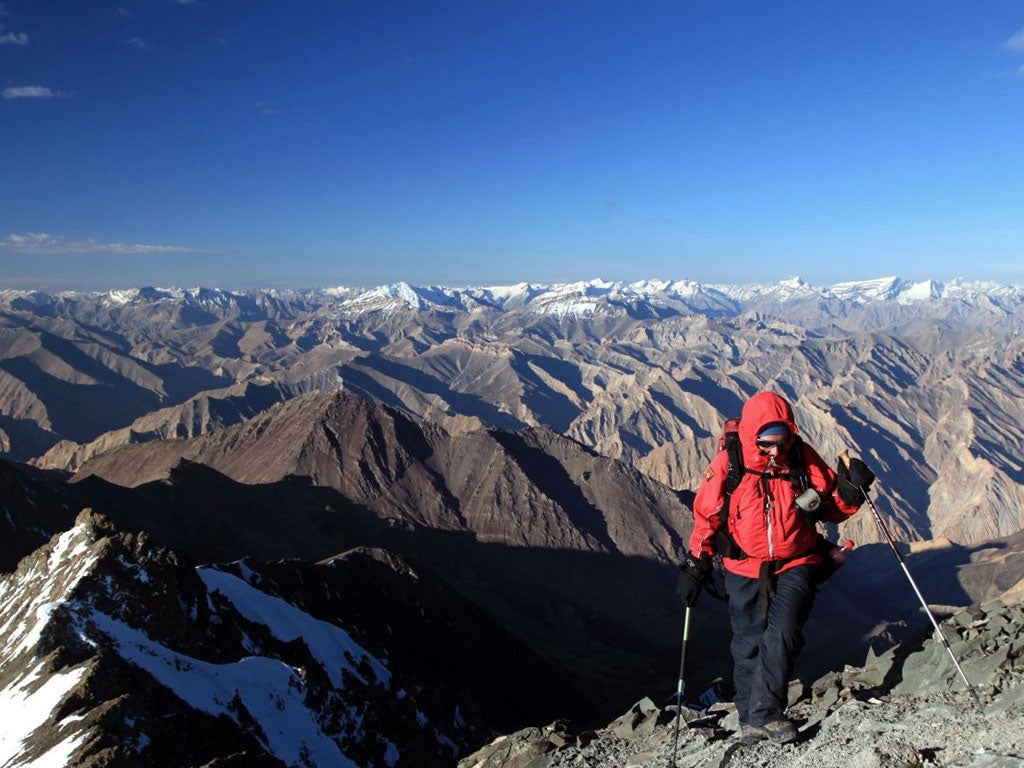Altitude sickness peaks in Ladakh
But just why this Himalayan region makes people so ill is baffling scientists

For trekkers and mountaineers, scientists have issued a mysterious warning. The worst place in the world for altitude sickness is Ladakh, the stark, beautiful region on India's northern border with China and Tibet – and nobody knows exactly why.
Ladakh, literally "the land of high passes", lies between the Himalayas and the Kunlun mountain range at a height of more than 3,000 metres (9,800 feet). It is a high-altitude desert which has become a popular destination for adventure travellers in the last decade, drawn by its remote culture and extraordinary panoramas.
Now the largest study of visitors to mountainous regions around the world who were previously assessed for their vulnerability to altitude sickness has found that Ladakh presented the biggest threat.
Jean-Paul Richalet, professor of physiology at the University of Paris North, who led the study published in the American Journal of Respiratory and Critical Care Medicine, said: "When adjusted for all other risk factors, especially rate of ascent, one location – Ladakh – remained associated with a higher risk of severe high-altitude illness."
But the researchers were unable to identify why the region had the greatest impact. "No clear explanation, linked to the climate or the difficulty of the terrain is available, although many informal reports mention the higher risk of this location," Dr Richalat said. The researchers assessed more than 1,300 people who planned excursions to mountainous areas which involved at least three days above 4,000 metres, and sleeping overnight above 3,500 metres.
Before they left, they were given a series of tests to measure their breathing and heart rate at low-oxygen levels – to mimic the effects of high altitude – and the results were compared with their actual experience after they returned from their trip.
Almost one in four (318) suffered a severe altitude illness with symptoms of headache, nausea, fatigue and dizziness, associated in the some cases with swelling of tissue in the lungs and brain.
The study is the first to suggest an association between the geographical location of ascent and altitude sickness. The drug acetazolamide (Diamox) cut the risk of developing the condition among the participants by 44 per cent, the study found. Neverthleless, among the 318 who developed altitude sickness, a third (105) had used Diamox.
The research revealed potential risk factors for altitude sickness. Participants who experienced a significant reduction in the amount of oxygen in the blood when exercising in a low-oxygen environment were more likely to develop symptoms.
A common experience at altitude is how breathing fails to keep pace with the demands of the body which triggers involuntary gasps for air and a feeling of suffocation. A conscious effort to breathe faster and deeper is necessary as part of acclimatisation.
But getting fit is no defence against altitude sickness. The study found that those who took most exercise to prepare for their trip were at increased risk from the condition. "Those who visit high altitudes should realise intense aerobic training is not a predictor of success in high-altitude expeditions," Dr Richalet said.
Subscribe to Independent Premium to bookmark this article
Want to bookmark your favourite articles and stories to read or reference later? Start your Independent Premium subscription today.

Join our commenting forum
Join thought-provoking conversations, follow other Independent readers and see their replies